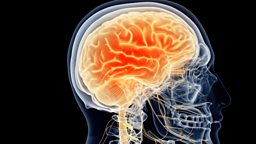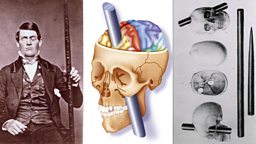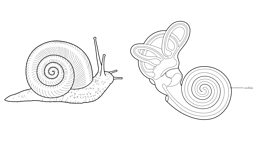Seven ways artificial intelligence can make the world better
15 June 2018
Artificial Intelligence (AI) is an increasingly large part of our lives and could be as world-changing as the 19th Century's Industrial Revolution. While the prospect of intelligent machines has spawned scare stories galore - in science fiction and real life - author James Scott told the Hay Festival some reasons to be optimistic, too. ALASDAIR MACRAE investigates.
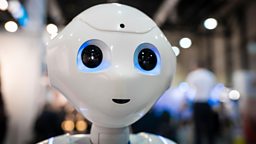
What exactly is artificial intelligence? Data scientist James Scott addressed the Hay Festival on this very subject. He is the co-author of AIQ: How Artificial Intelligence Works and How We Can Harness Its Power for a Better World, a book that sets out to demystify the world of artificial intelligence.
When you think of AI, don’t think of a droid... think of an algorithmJames Scott
“When you think of AI, don’t think of a droid,” says Scott. “Don’t think of R2D2, or The Terminator, or the Daleks from Doctor Who. Think of an algorithm. And an algorithm is literally just a set of instructions that are so simple and direct that even something as literal-minded as a computer can follow them.
“You’re all familiar with algorithms too; pick up a famous cookbook, Mary Berry’s Guide to Cakes or whatever. That is an algorithm for baking a Victoria sponge. It’s just a set of instructions. An AI is just a pipeline of algorithms.”
These algorithms work together so quickly that it gives you the illusion of intelligence, but as Scott discussed, the concept of creating a machine that is truly smarter than we are is a long way off. It would be as if the inventor of the jet engine in the 1950s worried about the implications of warp speed travel to other galaxies.
Of course, there are more grounded fears about giving up our personal data so that these algorithms can make more informed decisions, and the potential for abuse. But used responsibly, there are incredible things that could be achieved with artificial intelligence. Here are seven of them.
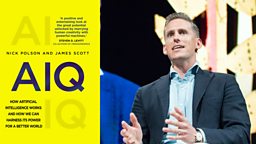
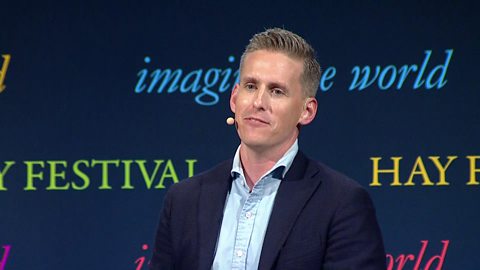
What exactly is artificial intelligence?
Author James Scott clears up how AI works.
1. Improving medical systems and helping doctors save more lives

After being disgusted with hospital conditions during the Crimean War, Florence Nightingale championed healthcare reform in the 19th century. A statistician herself, she noted that every hospital in London had its own method of classifying illnesses; by standardising to a common system, it allowed them to share knowledge more easily and lead to better diagnoses.
Scott argues we face a similar problem today, except in the form of incompatible medical databases. Healthcare systems often have outdated technology and, in the case of his native US with its private healthcare, every hospital may have a different company’s software installed which won’t work well with each other.
Healthcare data is a tricky area, as the privacy issues involved are important and must be addressed – although again there is ongoing tech research into how this could be made secure. But Scott believes doctors could use a common database of patient information, as the greater data-sets would allow for algorithms to recognise patterns faster, potentially leading to earlier warning signs of diseases.
Furthermore, productivity could be improved with AI. Medical image recognition could be used to speed up diagnosis from MRI scans, X-rays etc. In the US, studies show medical staff spend up to a third of their time doing data entry – voice recognition AI assistants would allow faster entry and allow doctors’ time to be spent on more important work, or at least stop them having to work 15 hour shifts.

How artificial intelligence could revolutionise the NHS
Data scientist James Scott: AI can help Britain become a world leader in healthcare.
2. Revolutionising education around the world

It’s difficult to imagine education without human teachers, but AI could be a better substitute for the current model of learning from textbooks, scripts, and teaching plans – one that could be more easily and cheaply updated as the education needs of children change in a rapidly evolving world.
Some argue this wouldn’t just improve existing education systems, but could also allow a high quality of schooling to be administered at less expense, levelling the playing field for poverty-stricken parts of the world.
In addition, technology could change what we even think of as an education system. Education experts argue our current method of teaching a standard curriculum to all students and then testing them on it is an outdated practise. It is effectively a ‘talent sifting system’, but will be irrelevant in a world where menial work is more efficiently done by AI-driven machines and employers will place greater value on individual creativity and softer competencies like communication skills.
Instead, they argue that students could use AI-assisted technology to tailor their own education, getting better at what appeals to them rather than what the curriculum dictates they should know. This self-directed learning would change the role of teachers; rather than being a delivery system of information to students, they would leave that to technology and assume the role of coaches or mentors, closer to art, sports and design teachers who already assess students more subjectively than merely training them to pass a test.
3. Taking the drudgery out of journalism
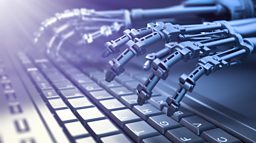
The core promise of AI systems is that they will take care of trivial tasks and leave humans to focus on what AI is not capable of, and the field of journalism is taking advantage of this time-saver. The Washington Post has its own AI technology, , which has written hundreds of articles on the Olympics, political races, high school sports, and similar statistic-driven reports that traditionally would be tedious work for a human writer to churn out. The papers say that AI-assisted journalism allows reporters to focus on meatier stories that require more research and human decision-making.
But automatic writing systems are developing further, with various AI programs assimilating snippets from genre fiction and then generating original stories. The Princess and the Fox is the first fairy tale written by an AI, created by scanning the works of the Brothers Grimm, producing phrases that would then be pieced together into ‘the rough shape of a story’.
However, the day when machines can tell us a good story is still distant. While AI can generate content, it still requires the human eye to judge tone and personality, and sometimes even just to make sense. See the bizarre short film for what happens when actors perform an AI-generated screenplay with no human rewrites.
4. Empowering small businesses - from cloud computing to cucumber-sorting

Scott’s book AIQ opens with the story of a cucumber farm in Japan that he feels is inspiring for the democratisation that AI tools can bring. The woman who owned this farm used to spend eight hours per day sorting cucumbers by hand, judging them by quality to sell to different markets.
Her son, an automobile engineer, wanted to relieve his mother from all these days of drudgery. He was able to download open source software from Google called that he’d never used before, and read the free documentation on how to use it. He then created cucumber-sorting software that took a picture of the cucumber and automatically sorted it into one of eight different classes, cutting out all that tedious work for his mother.
Additionally, cloud computing is becoming ever-more widespread which means that the small business owner or would-be data scientist doesn’t need to invest in the huge cost of servers required to make use of these algorithms. Instead, space can be affordably rented from anywhere in the world, allowing the productivity of an AI to be available for anyone who takes the time to learn, not just the corporate giants like Google and Apple.
5. Analysing data to improve diversity in the movie business

AI analysis can help us overcome our unconscious biases – take Hollywood, for example. Oscar-winning actor Geena Davis (pictured, right) set up her own to get some solid data on the under-representation of women in American movies.
Using technology from Google to face-scan the highest-grossing films from 2014-2016, they collected information on how often males and females appeared and spoke on screen. , men were seen and heard nearly twice as often as women.
This raw data can expose blind spots in media. A survey of filmmakers found that 68% reconfigured their projects after seeing these findings and 41% stated it had impacted one or more of their movies. “We'll see some major improvement in both the number and quality of female characters within the next five to ten years,” Davis predicts. Of course, there is no reason this technology couldn’t be used for race, age, or any under-represented group.
Above image © 2018 Geena Davis Institute on Gender in Media.
6. Saving the planet with smart homes and robotic bees

The National Grid already uses weather-recognition software to switch on renewable power plants when the right conditions are met, but AI could help us protect our environment in other ways too. Smart homes can regulate the energy usage within our houses, for example.
Also, algorithms have been used to study the shrinking populations of honey bees in an attempt to understand why they may be going extinct. This could allow humans to attempt to reverse this worrying trend; on the other hand, insect-like AI drones are also being developed as a fall-back plan, to take the place of bees and continue the important pollination of flowers to keep the ecosystem from collapsing.
7. Developing new ways of thinking – and then teaching them to us...
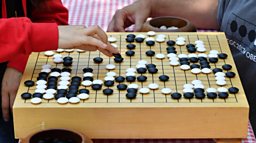
There are many examples of computers defeating humans at various games, such as Deep Blue famously beating world champion Garry Kasparov at chess in 1997. However, the true power of these AIs was made evident by a different game.
Go (pictured) is a 3,000-year-old Chinese board game that is very simple to learn, but features incredible complexity, far more than chess. It has been described as the most elegant game ever created. In parts of Asia, children who show promise are taken out of school to attend special ‘Go schools’, where they train for 12 hours a day, seven days a week, in order to become champions.
When Google’s AlphaGo AI defeated the world champion Go players, it surprised them by playing in ways that had never been seen before. In 3,000 years of the game, no human had come up with the strategies this AI had. Now, the system is being used to train human players, opening their minds about moves they had never even considered.
Of course, there’s little value in AIs being good at games in and of itself, but the way that an algorithm can learn and test thousands of strategies in a short space of time is fascinating as it effectively speeds up our own learning. This could be applied to many different fields to find solutions we would take hundreds of years to come up with.
AIQ: How Artificial Intelligence Works and How We Can Harness Its Power for a Better World, by James Scott and Nick Polson, is published by Bantam Press.
All images courtesy of Alamy unless specified.



